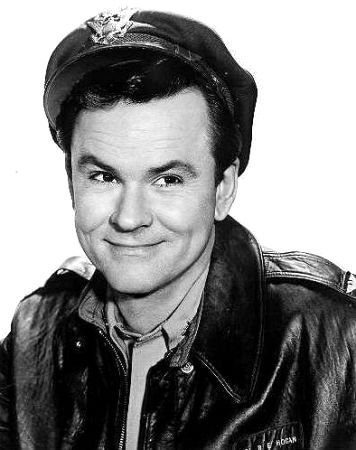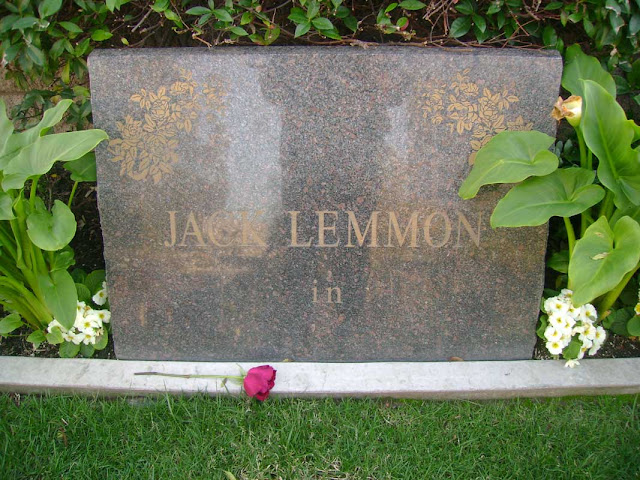Lana Turner (February 8, 1921 – June 29, 1995) was an American actress.
Discovered and signed to a film contract by MGM at the age of sixteen, Turner first attracted attention in They Won't Forget (1937). She played featured roles, often as the ingenue, in such films as Love Finds Andy Hardy (1938). During the early 1940s she established herself as a leading actress in such films as Johnny Eager (1941), Ziegfeld Girl (1941) and Somewhere I'll Find You (1942), and her reputation as a glamorous femme fatale was enhanced by her performance in the film noir The Postman Always Rings Twice (1946). Her popularity continued through the 1950s, in such films as The Bad and the Beautiful (1952) and Peyton Place (1957), for which she was nominated for an Academy Award for Best Actress.
In 1958, her daughter, Cheryl Crane, stabbed Turner's lover Johnny Stompanato to death. A coroner's inquest brought considerable media attention to Turner and concluded that Crane had acted in self defense. Turner's next film, Imitation of Life (1959), proved to be one of the greatest successes of her career, but from the early 1960s, her roles were fewer. She gained recognition near the end of her career with a recurring guest role in the television series Falcon Crest during 1982 and 1983.
Turner made her final television appearance in 1991, and died from throat cancer in 1995.
Early life
Born Julia Jean Turner in Wallace, Idaho, she was the daughter of John Virgil Turner, a miner from Hohenwald, Tennessee, and Mildred Frances Cowan, a sixteen-year-old Arkansas native.
Until her film career took off, she was known to family and friends as "Judy." Hard times eventually forced the family to re-locate to San Francisco, where her parents soon separated.
On December 14, 1930, her father won some money at a traveling craps game, stuffed his winnings in his left sock, and headed for home. He was later found dead on the corner of Minnesota and Mariposa Streets, on the edge of Potrero Hill and the Mission District in San Francisco, his left shoe and sock missing.[1][2] The robbery and murder were never solved. Soon after, her mother developed health problems and was advised by her doctor to move to a drier climate. With her ten-year-old daughter, she moved to Los Angeles in 1931.[2]
Mildred and Lana were very poor, and Turner was sometimes separated from her mother, living with friends or acquaintances so that the family could save money. Her mother worked as a beautician to support them. After Turner was discovered, her mother became the overseer of Turner's career.[3]
Film career
Turner's discovery at a Hollywood drug store is a show-business legend. As a sixteen-year-old student at Hollywood High School Turner skipped a typing class and bought a Coke at the Top Hat Cafe located on the southeast corner of Sunset Boulevard and McCadden Place (not Schwab's Pharmacy), where she was spotted by William R. Wilkerson, publisher of The Hollywood Reporter. Wilkerson was attracted by her beauty and physique, and referred her to the actor/comedian/talent agent Zeppo Marx. Marx's agency immediately signed her on and introduced her to film director Mervyn LeRoy, who cast her in her first film, They Won't Forget (1937). She also appeared as an extra that year in A Star Is Born—a part of the crowd at a boxing match, and in the Andy Hardy movie Love Finds Andy Hardy (1938).[4]
Turner earned the nickname "The Sweater Girl" from her form-fitting attire in a scene in They Won't Forget. In late 1937, she signed a contract with Metro-Goldwyn-Mayer, and graduated high school in between takes. Her first starring role for MGM was scheduled to be an adaption of The Sea-Wolf, co-starring Clark Gable, but the project was eventually canned.[5]
Turner reached the height of her fame in the 1940s and 1950s. During World War II, Turner became a popular pin-up girl due to her popularity in such films such as Ziegfeld Girl (1941), Johnny Eager (1942), and four films with Metro–Goldwyn–Mayer's "king of the lot," Clark Gable. The Turner-Gable films' successes were only heightened by gossip-column rumors about a relationship between the two. Turner even had a B-17 Flying Fortress—the Tempest Turner—named after her.[6]
After the war, Turner's career continued successfully with the release, in The Postman Always Rings Twice (1946), which co-starred John Garfield.[7]. The now-classic film noir marked a turning point in her career. Reviews of the film, and in particular, Turner's performance, were glowing. While not exactly giving up her pin-up credentials, Turner established herself as a skilled actress.
During the 1950s, Turner starred in a series of films that failed to succeed at the box office, a situation MGM attempted to remedy by casting her in musicals. The first, Mr. Imperium (1951), was a flop, while The Merry Widow (1952) was more successful. She gave a widely praised performance in Vincente Minnelli's film, The Bad and the Beautiful (1952), and later starred with John Wayne in the adventure film The Sea Chase (1955). She was then cast in the epic The Prodigal (1955), but the film and her performance in general were not well received. After the film Diane (1956), MGM opted not to renew her contract. This was a difficult time for Hollywood's major studios because a recent court decision forced them to divest themselves of their movie theaters. In addition, television had caught on in a big way; the public was staying home. Turner was just one of MGM's star roster to be let go.
Turner's career recovered briefly after she appeared in the hugely successful big-screen adaptation of Grace Metalious's best-selling novel, Peyton Place (1957), for which she was nominated for an Academy Award for Best Actress. Another few box-office failures followed (Another Time, Another Place (1958), for example) when the 1958 scandal surrounding her daughter's killing of Stompanato threatened to derail her career completely.
In the trail of the related negative publicity, Turner accepted the lead role in Ross Hunter's remake of Imitation of Life (1959) under the direction of Douglas Sirk. Universal Studios capitalized on her new-found notoriety; the result was one of the biggest hits of the year, as well as the biggest hit of Turner's career.[citation needed] Critics and audiences couldn't help noticing that the plots of both Peyton Place and Imitation of Life had borrowed heavily from Turner's private life. Each film depicted the troubled, complicated relationship between a single mother and her teenage daughter.
She made her last film at MGM starring with Bob Hope in Bachelor in Paradise (1961). Other highlights of this era include two Hunter productions (for whom she did Imitation of Life), Portrait in Black (1960) and Madame X (1966), which proved to be her last major starring role.
Personal life
Lana Turner in Dr. Jekyll and Mr. Hyde (1941).Turner was well known inside Hollywood circles for dating often, changing partners often, and for never shying away from the topic of how many lovers she had in her lifetime.
Turner was married eight times to seven different husbands:
Bandleader Artie Shaw (1940) Married only four months, Turner was 19 when she and Shaw eloped on their first date. She later referred to their stormy and verbally abusive relationship as "my college education,"
Actor-restaurateur Joseph Stephen Crane (1942–1943, 1943–1944) Turner and Crane's first marriage was annulled after she discovered that Crane's previous divorce had not yet been finalized. After a brief separation (during which Crane attempted suicide), they re-married to provide for their newborn daughter, Cheryl.
Millionaire socialite Henry J. Topping Jr. (1948–1952) Topping proposed to Turner at the 21 Club in Los Angeles by dropping a diamond ring into her martini. Although worth millions when they married, Topping suffered heavy financial losses due to poor investments and excessive gambling. Turner finally divorced Topping when she realized she could no longer afford to keep them in the lavish lifestyle to which they had grown accustomed.
Actor Lex Barker (1953–1957), whom she divorced. In a book written by Cheryl Crane, Crane claimed that he repeatedly molested and raped her, and that it was after she told her mother this that they divorced.
Rancher Fred May (1960–1962)
Robert P. Eaton (1965–1969);[8] who later went on to write The Body Brokers, a behind-the-scenes look at the Hollywood movie world, featuring a character named Marla Jordan, based on Turner.
Nightclub hypnotist Ronald Pellar, also known as Ronald Dante or Dr. Dante (1969–1972). The couple met in 1969 in a Los Angeles discotheque and married that same year. After about six months of marriage, Pellar disappeared a few days after Turner had written a $35,000 check to him to help him in an investment; he used the money for other purposes. In addition, she later accused him of stealing $100,000 worth of jewelry.[9]
She later famously said, "My goal was to have one husband and seven children, but it turned out to be the other way around."
The Stompanato killing
Turner met Stompanato during the spring of 1957, shortly after ending her marriage to Barker. At first, Turner was susceptible to Stompanato's good looks and prowess as a lover, but after she discovered his ties to the Los Angeles underworld (in particular, his association with gangster Mickey Cohen), she tried to break off the affair out of fear of bad publicity. Stompanato was not easily deterred, however, and over the course of the following year, they carried on a relationship filled with violent arguments, physical abuse and repeated reconciliations.
In the fall of 1957, Stompanato followed Turner to England where she was filming Another Time, Another Place (1958) costarring Sean Connery. Fearful that Turner was having an affair with Connery, Stompanato stormed onto the set brandishing a gun. Connery managed to land a single punch to Stompanato's jaw and took away his gun. Stompanato was soon deported by Scotland Yard for the incident.[10]
On the evening of April 4, 1958, Turner and Stompanato began a violent argument in Turner's house at 730 N. Bedford Drive in Beverly Hills. Fearing her mother's life was in danger, Turner's fourteen-year-old daughter, Crane, grabbed a kitchen knife and ran to Turner's defense.[11]

Many theories abound as to what happened afterward, but it appears Crane stabbed Stompanato, killing him. The case quickly became a media sensation. It was later deemed a justifiable homicide at a coroner's inquest, at which Turner provided dramatic testimony. Some observers have said her testimony that day was the acting performance of her life.[12]
Later life
In the 1970s and 1980s, Turner appeared in several television roles, most notably one season (1982–1983) on the series Falcon Crest as Jaqueline Perrault, but the majority of her final decade was spent out of the public eye.

She died at the age of 74 in 1995 of complications from throat cancer, which was diagnosed in 1992 and which she had been battling ever since, at her home in Century City, Los Angeles, California. She was, until her death, a very heavy smoker.

Turner was survived by Crane, her only child, and Crane's life partner Joyce "Josh" LeRoy, whom she said she accepted "as a second daughter." They inherited some of Turner's sizable estate, built through shrewd real estate holdings and investments. However, the majority of her estate was left to her maid, Carmen Lopez Cruz.
For her contribution to the motion-picture industry, Turner has a star on the Hollywood Walk of Fame at 6241 Hollywood Boulevard.
In literature
Turner is the subject of the poem "Lana Turner has collapsed" by the poet Frank O'Hara.
She was the visual basis for the character Janice Porter in the comic Batman: Dark Victory.
Turner and Stompanato appear as minor characters in James Ellroy's novel "L.A. Confidential."
References
1.^ Basinger, Jeanine (1976). Lana Turner. Pyramid Publications. p. 19.
2.^ Wayne, Jane Ellen (2003). The Golden Girls of MGM: Greta Garbo, Joan Crawford, Lana Turner, Judy Garland, Ava Gardner, Grace Kelly and Others. Carroll & Graf Publishers. pp. 164–165. ISBN 0786713038.
3.^ Fischer, Lucy (1991). Three Way Mirror: Imitation of Life. New Brunswick, New Jersey: Rutgers University Press. pp. 3–28.
4.^ http://www.andyhardyfilms.com/andysgirls.htm
5.^ The Charleston Gazette, December 17, 1937, p. 4
6.^ Lana Turner Biography - LanaTurner.org
7.^ http://www.cmgww.com/stars/turner/biography.html
8.^ TIME
9.^ Jones, J. Harry (August 5, 2006). The Amazing Dr. Dante Has Seen It All. The San Diego Union-Tribune.
10.^ In Lana Turner's Bedroom
11.^ http://www.geocities.com/Hollywood/Studio/2024/page19.html
12.^ "Lana Turner's Daughter Tells Her Story". Larry King Live. August 8, 2001.
Crane, Cheryl; with Jahr, Cliff (1988). Detour: A Hollywood Story. Arbor House/William Morrow.
Lewis, Brad (2007). Hollywood's Celebrity Gangster. The Incredible Life and Times of Mickey Cohen Enigma Books, New York. ISBN 978-1-929631-65-0.
Bernier, Michelle (2010). "Did these stories really happen?" Createspace.
















.JPG)
.JPG)












.jpg)
.jpg)
.jpg)


.jpg)
.jpg)


















